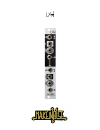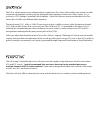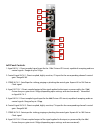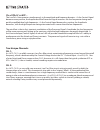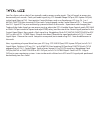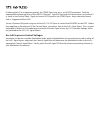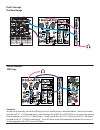- DL manuals
- Make Noise
- Music Equipment
- LxD
- User Manual
Make Noise LxD User Manual
Summary of LxD
Page 1
V 1.0
Page 2
Limited warranty: make noise warrants this product to be free of defects in materials or construction for a period of one year from the date of purchase (proof of purchase/invoice required). Malfunction resulting from wrong power supply voltages, backwards or reversed eurorack bus board cable connec...
Page 3: -12V
Electrocution hazard! The make noise lxd is an electronic music module requiring 30 ma of +12vdc and 30 ma of -12vdc regulated voltages and a properly formatted distribution receptacle to operate. It must be properly installed into a eurorack format modular synthesizer system case. Go to http://www....
Page 4
The lxd is a dual-response, two channel, direct-coupled, low pass gate, which utilizes two vactrols in order to provide simultaneous control over the amplitude and frequency content of an input signal. It is, in essence, a vcfa (voltage controlled filter amplifier). Unlike the optomix and some other...
Page 5
1 2 lxd panel controls 1. Signal in ch. 1: direct coupled signal input for the 12db/ octave lpg circuit, capable of accepting audio or control signals. Range of up to 15vpp. 2. Control signal in ch. 1: direct-coupled, highly sensitive, cv input for the corresponding channel’s vactrol gate. Range 0v-...
Page 6
It’s a vca, it’s a vcf... The low pass gate operates simultaneously in the amplitude and frequency domains. As the control signal becomes more positive, the amplitude of the processed signal increases: the low frequencies being more quickly amplified than high frequencies. As the control signal beco...
Page 7
: low pass gates such as the lxd are typically used to process audio signals. The lxd excels at processing harmonically-rich sounds. Patch your audio signal (e.G. Sto variable shape output; dpo square output) to the signal input of ch1. Next, patch a control voltage, such as an envelope or lfo (e.G....
Page 8
If utilizing the lxd in a sequencing patch, the strike input may act as an accent parameter. Patch an attenuated envelope signal (e.G. From maths channel 1 signal output with the attenuvertor set to about 2 o’ clock) to the control input. Apply an accent gate/signal to the strike input. Steps where ...
Page 9
Patch concept: the new bongo patch concept: fm pings: variation: in order to dynamically control the fm pings, first set up the patch as described above. Remove the cable from the lxd ch. 1 output and apply a slow envelope from maths or function (or any positively-moving control voltage) to lxd’s ch...

